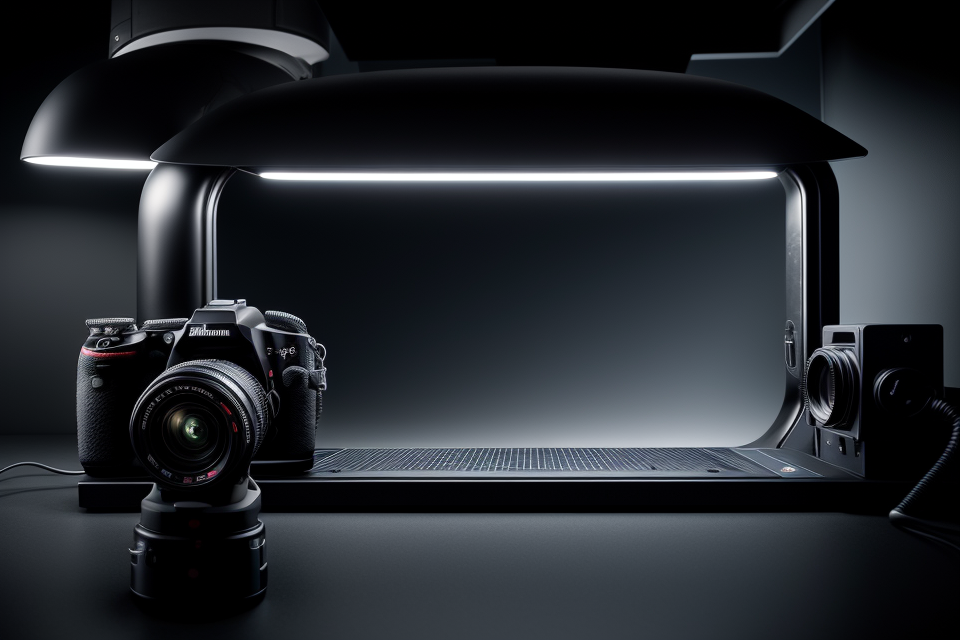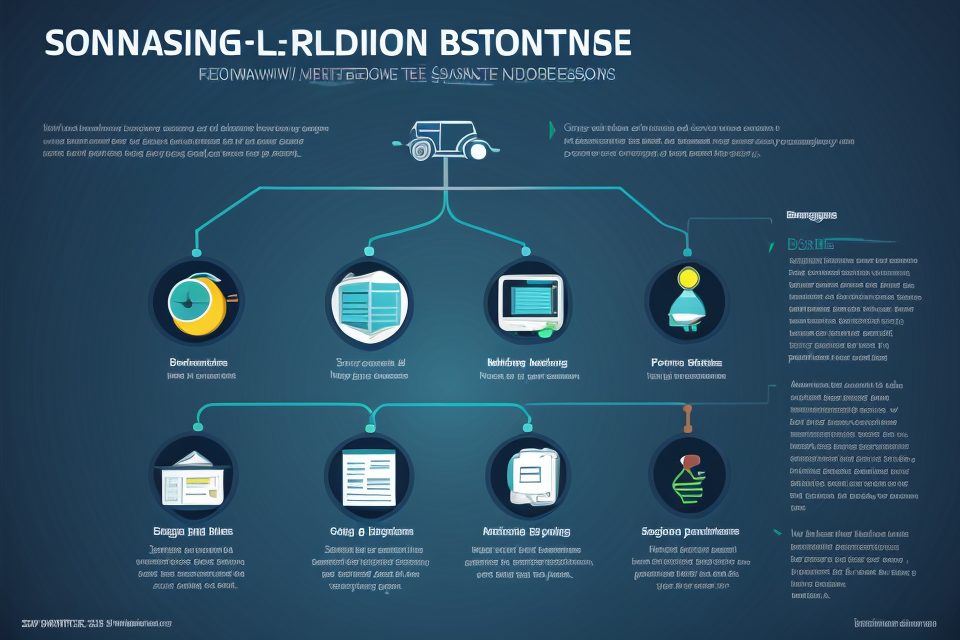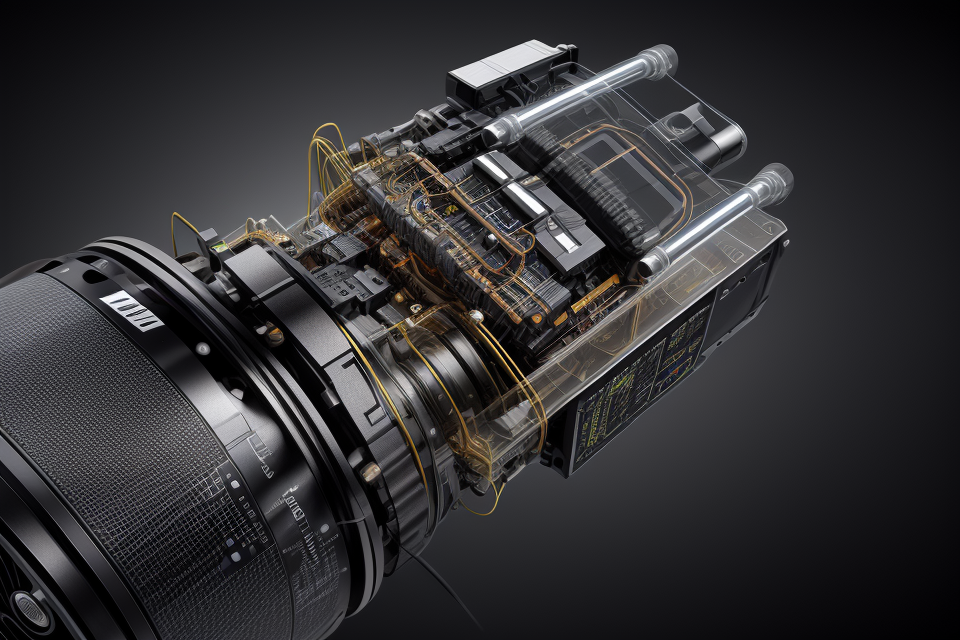
Doppler sensors, also known as velocity sensors, are devices that measure the velocity of moving objects. They work by emitting a field of electromagnetic waves and measuring the reflections of these waves off nearby objects. By analyzing the changes in frequency and phase of the reflected waves, Doppler sensors can determine the speed and direction of movement of an object.
These sensors have a wide range of applications, including in the automotive industry, aerospace, and medical imaging. In the automotive industry, Doppler sensors are used to measure the speed and direction of vehicles, while in aerospace, they are used to measure the velocity of aircraft and spacecraft. In medical imaging, Doppler sensors are used to measure the velocity of blood cells, which can help diagnose various conditions such as heart disease.
This guide will provide an in-depth understanding of Doppler sensors, including how they work, their applications, and their limitations. Whether you’re a professional in the field or just curious about this technology, this guide will give you a comprehensive understanding of Doppler sensors.
What is a Doppler Sensor?
Principles of Operation
Explanation of Doppler Effect
The Doppler effect is a phenomenon that occurs when a wave, such as sound or light, is emitted by a moving source. The frequency of the wave, as measured by a stationary observer, appears to change due to the relative motion between the source and the observer. This change in frequency is known as the Doppler shift.
Frequency Shift and its Significance
The Doppler shift is a result of the relative motion between the source and the observer. When the source is moving towards the observer, the frequency of the wave increases, while the frequency decreases when the source is moving away from the observer. This frequency shift is significant because it can be used to measure the velocity of the moving source.
Signal Processing for Velocity Measurements
To accurately measure the velocity of a moving source using the Doppler effect, the received signal must be processed. This typically involves filtering the received signal to remove noise and other interference, and then analyzing the frequency shift to determine the velocity of the source. The processing techniques used can vary depending on the specific application and the characteristics of the received signal.
Types of Doppler Sensors
Doppler sensors are a type of sensor that measures the changes in frequency and wavelength of sound waves. There are three main types of Doppler sensors: static, moving target, and imaging.
Static Doppler Sensors
Static Doppler sensors are used to measure the speed and direction of moving objects. They work by emitting a field of sound waves and measuring the changes in frequency and wavelength of the reflected waves. These sensors are commonly used in applications such as traffic monitoring and industrial automation.
Moving Target Doppler Sensors
Moving target Doppler sensors are similar to static sensors, but they are designed to measure the speed and direction of moving targets, such as vehicles or aircraft. They work by emitting a field of sound waves and measuring the changes in frequency and wavelength of the reflected waves. These sensors are commonly used in applications such as radar and sonar.
Imaging Doppler Sensors
Imaging Doppler sensors are used to create images of the inside of the body. They work by emitting sound waves and measuring the changes in frequency and wavelength of the reflected waves. These sensors are commonly used in applications such as medical imaging and non-destructive testing.
Applications of Doppler Sensors
Medical Diagnostics
Doppler sensors have numerous applications in medical diagnostics, thanks to their ability to measure changes in frequency and wavelength of sound waves. Some of the most common medical diagnostic applications of Doppler sensors include:
Cardiovascular and Pulmonary Applications
Doppler sensors are commonly used in the diagnosis of cardiovascular and pulmonary conditions. By measuring the frequency shift of sound waves reflected off blood cells, Doppler sensors can provide valuable information about blood flow and vessel function. This information can be used to diagnose conditions such as blood clots, heart murmurs, and pulmonary embolisms.
Fetal Monitoring
Doppler sensors are also used in fetal monitoring during pregnancy. By measuring the frequency shift of sound waves reflected off the fetal heart, Doppler sensors can provide information about fetal heart rate and rhythm. This information can be used to detect potential problems with fetal development, such as heart defects or slow heart rate.
Continuous Glucose Monitoring
Doppler sensors are also used in continuous glucose monitoring systems for diabetes patients. By measuring the frequency shift of sound waves reflected off blood cells, Doppler sensors can provide information about blood glucose levels. This information can be used to continuously monitor glucose levels and provide alerts when levels are too high or too low.
Overall, Doppler sensors have proven to be a valuable tool in medical diagnostics, providing accurate and non-invasive measurements that can help healthcare professionals diagnose and treat a wide range of conditions.
Industrial Automation
Doppler sensors have found wide applications in industrial automation due to their ability to measure the speed and direction of moving objects. Here are some of the key applications of Doppler sensors in industrial automation:
Non-destructive testing
Non-destructive testing (NDT) is a critical process in industrial automation that involves inspecting materials and components for defects or weaknesses without causing any damage. Doppler sensors are often used in NDT processes to measure the speed and direction of moving parts, such as rotating shafts or gears. By detecting even the slightest changes in the frequency of the reflected waves, Doppler sensors can help identify potential problems before they become serious.
Robotics and automation
Robotics and automation are increasingly being used in manufacturing and assembly processes to improve efficiency and accuracy. Doppler sensors play a crucial role in these processes by providing real-time feedback on the movement of robots and other automated systems. By measuring the speed and direction of moving parts, Doppler sensors can help ensure that robots and other automated systems move accurately and smoothly, without colliding with other objects or components.
Process control and monitoring
Doppler sensors are also used in process control and monitoring applications in industrial automation. For example, they can be used to monitor the speed of conveyor belts or other moving parts in a manufacturing process. By measuring the speed of these components, Doppler sensors can help ensure that products are moving at the correct speed and that the manufacturing process is running smoothly. They can also be used to monitor the speed of pumps, fans, and other machinery, helping to detect potential problems before they cause serious damage.
Overall, Doppler sensors are an essential component of many industrial automation systems, providing real-time feedback on the movement of components and helping to improve efficiency, accuracy, and safety in manufacturing and assembly processes.
Environmental Monitoring
Doppler sensors have numerous applications in environmental monitoring, including atmospheric and meteorological applications, traffic flow monitoring, and water quality monitoring. In this section, we will explore the various ways in which Doppler sensors are used for environmental monitoring.
Atmospheric and Meteorological Applications
Doppler sensors are used in atmospheric and meteorological applications to measure wind speed and direction. This information is crucial for weather forecasting and monitoring, as well as for assessing the potential impact of severe weather events on infrastructure and populations. By measuring wind speed and direction, Doppler sensors can provide valuable data for researchers and decision-makers, helping them to better understand and respond to changes in the atmosphere.
Traffic Flow Monitoring
Doppler sensors are also used in traffic flow monitoring, where they are used to measure the speed and direction of vehicles. This information is used to monitor traffic patterns and congestion, and to inform traffic management decisions. By providing real-time data on traffic flow, Doppler sensors can help to reduce congestion, improve safety, and optimize traffic management systems.
Water Quality Monitoring
Doppler sensors are used in water quality monitoring to measure the velocity of water in rivers, streams, and other bodies of water. This information is used to monitor the health of waterways, as well as to inform decisions related to water management and conservation. By providing real-time data on water velocity, Doppler sensors can help to identify potential sources of pollution, monitor the effects of climate change on waterways, and inform decisions related to water resource management.
Overall, Doppler sensors play a crucial role in environmental monitoring, providing valuable data on atmospheric and meteorological conditions, traffic flow, and water quality. By leveraging the power of Doppler sensors, researchers and decision-makers can gain a better understanding of the environment, and take steps to protect and preserve it for future generations.
Security and Surveillance
Detection of Intruders and Objects
Doppler sensors are increasingly being used in security and surveillance systems to detect intruders and objects in real-time. By measuring the Doppler shift of radio waves reflected off moving objects, these sensors can provide accurate and reliable detection capabilities.
Border and Perimeter Security
Doppler sensors are also used in border and perimeter security applications to detect movement and monitor activity. By installing these sensors along borders and perimeters, security personnel can quickly detect any unauthorized movement or activity, providing early warning and allowing for timely response.
Military and Defense Applications
Doppler sensors have a wide range of military and defense applications, including detecting and tracking moving targets, such as vehicles and personnel. These sensors can also be used for navigation and tracking in military vehicles, providing real-time information on speed, direction, and location.
In addition, Doppler sensors can be used in surveillance and reconnaissance operations, providing critical information on enemy movements and activities. By integrating these sensors into military systems, soldiers and personnel can gain a significant advantage in battlefield situations, improving situational awareness and allowing for more effective decision-making.
Doppler Sensor Technology and Future Advancements
Current State of Doppler Sensor Technology
Doppler sensors have come a long way since their inception, and they continue to be refined and improved. The current state of Doppler sensor technology is characterized by its widespread use in various industries, such as healthcare, transportation, and manufacturing. However, there are still limitations and challenges that researchers and developers are working to overcome.
One of the main limitations of Doppler sensors is their accuracy. While they can provide valuable data, their measurements can be affected by external factors such as temperature, humidity, and vibration. These factors can lead to inaccuracies in the data collected, which can have serious consequences in some applications.
Another challenge facing Doppler sensor technology is the need for miniaturization. Many applications require sensors that are small and lightweight, but current Doppler sensors are often bulky and heavy. Researchers are working to develop smaller, more efficient sensors that can be used in a wider range of applications.
Despite these challenges, ongoing research and development in Doppler sensor technology is helping to overcome these limitations and push the boundaries of what these sensors can do. Advances in materials science, electronics, and machine learning are all contributing to the development of more accurate, efficient, and versatile Doppler sensors.
As Doppler sensor technology continues to evolve, it is likely that we will see these sensors being used in an even wider range of applications. From monitoring heart rate and blood flow in medical applications to detecting and preventing equipment failures in industrial settings, Doppler sensors are proving to be an invaluable tool for measuring and analyzing motion and flow.
Future Trends and Advancements
Miniaturization and Integration
The future of Doppler sensor technology is expected to involve significant advancements in miniaturization and integration. These advancements will allow for the development of smaller, more portable devices that can be easily integrated into a wide range of applications.
One area where miniaturization is particularly important is in medical devices. For example, miniaturized Doppler sensors could be used to create portable devices for monitoring vital signs, such as heart rate and blood pressure, in real-time. This would be especially useful in remote or resource-limited settings, where access to medical equipment is limited.
Improved Accuracy and Resolution
Another area of focus for future Doppler sensor advancements is improving accuracy and resolution. This is particularly important in applications such as medical imaging, where the ability to detect small changes in tissue can be critical for diagnosing diseases.
One approach to improving accuracy is to use multiple sensors to gather data from different angles. By combining data from multiple sensors, it is possible to create a more complete picture of the target object or tissue. This technique is known as “synthetic aperture” and is already used in some medical imaging applications.
Expanded Applications and Fields
Finally, future advancements in Doppler sensor technology are likely to expand the range of applications and fields in which these sensors can be used. For example, Doppler sensors are already used in aerospace and defense applications, but their potential uses in these fields are far from exhausted.
One area where Doppler sensors could be particularly useful is in space exploration. By using Doppler sensors to measure the distance and velocity of objects in space, it may be possible to improve the accuracy of spacecraft navigation and rendezvous maneuvers. This could be especially useful for missions to Mars and other planets, where the distance between spacecraft and other objects is typically much greater than in Earth orbit.
FAQs
1. What is a Doppler sensor?
A Doppler sensor is a type of sensor that uses the Doppler effect to measure the speed and direction of moving objects. It works by emitting a field of electromagnetic waves, and then measuring the changes in frequency of the waves that are reflected off moving objects. By analyzing these changes in frequency, the Doppler sensor can determine the speed and direction of the moving object with high accuracy.
2. How does a Doppler sensor work?
A Doppler sensor works by emitting a field of electromagnetic waves, and then measuring the changes in frequency of the waves that are reflected off moving objects. When a moving object reflects the waves back to the sensor, the frequency of the reflected waves changes due to the Doppler effect. The Doppler sensor then analyzes these changes in frequency to determine the speed and direction of the moving object.
3. What are the advantages of using a Doppler sensor?
Doppler sensors have several advantages over other types of sensors. They are highly accurate, can measure the speed and direction of moving objects in real-time, and can work over long distances. They are also non-contact sensors, which means they can measure moving objects without any physical contact. Additionally, Doppler sensors are widely used in various industries, including automotive, aerospace, and healthcare, among others.
4. What are the applications of Doppler sensors?
Doppler sensors have a wide range of applications in various industries. They are commonly used in speed guns for law enforcement, in radar systems for weather forecasting, in industrial automation for monitoring machinery, in medical imaging for detecting blood flow, and in transportation for speed and traffic monitoring. They are also used in research and development for studying the behavior of moving objects in various environments.
5. What are the limitations of Doppler sensors?
Doppler sensors have some limitations, including their sensitivity to interference from other sources, such as nearby electronic devices or buildings. They also require a clear line of sight to the moving object in order to accurately measure its speed and direction. Additionally, Doppler sensors can be expensive, and may require specialized training to operate and maintain.
6. How accurate are Doppler sensors?
The accuracy of Doppler sensors depends on several factors, including the frequency of the waves emitted by the sensor, the speed of the moving object, and the distance between the sensor and the moving object. In general, Doppler sensors can be highly accurate, with some models capable of measuring speeds with an accuracy of within 1%. However, the accuracy can also be affected by environmental factors, such as humidity and temperature, which can impact the performance of the sensor.


